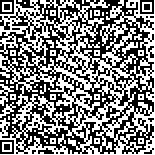| 摘要: |
| [摘要] 目的 分析乳头刺激引产对剖宫产后妊娠发生足月胎膜早破孕妇的结局影响。方法 回顾性分析2012-01~2016-11在防城港市第一人民医院分娩的40例剖宫产后妊娠发生足月胎膜早破孕妇的临床资料,按处理方式不同分为两组。剖宫产后阴道试产(TOLAC组)20例(孕妇签署知情同意书要求阴道试产),采用乳头刺激诱发子宫收缩促使临产。选择性再次剖宫产(ERCS组)20例(孕妇签署知情同意书要求剖宫产)。分析评价乳头刺激法的引产效果及引产成功的临床相关因素,比较剖宫产后阴道分娩组(VBAC组)与ERCS组的妊娠结局。结果 (1)Bishop评分法>6分组乳头刺激引产法成功率高达66.7%,5/9例孕妇在干预后6 h内发动宫缩,乳头刺激法引产成功的孕妇54.5%在产程进展中因宫缩乏力使用缩宫素,VBAC率达90.9%;(2)乳头刺激法引产成功组与失败组在年龄、孕前体重指数、Bishop评分法上比较差异有统计学意义(P<0.01);(3)VBAC组与ERCS组间产后出血量、住院天数、抗生素使用天数比较差异有统计学意义(P<0.01),ERCS组的产后出血量明显增多,住院天数和抗生素使用天数延长。由于研究样本量小,未发现研究对象发生严重并发症。结论 乳头刺激引产术效果并不确切,年轻孕妇、非肥胖孕妇、Bishop评分法>6分的孕妇引产成功率升高。过半数的产妇在引产过程中需要缩宫素加强宫缩,同样面临阴道试产产科并发症的风险。如有严密的监护措施,有紧急剖宫产的技术条件,缩宫素引产亦为安全的手段。 |
| 关键词: 乳头刺激 剖宫产后阴道试产 胎膜早破 妊娠结局 |
| DOI:10.3969/j.issn.1674-3806.2018.04.11 |
| 分类号:R 714.43+3 |
| 基金项目: |
|
| Induction of labour by nipple stimulation in patients with previous caesarean section and premature rupture of membranes |
|
SU Sha, ZHONG Qi-juan, HUANG Qiu-rong
|
|
Department of Obstetrics, the First Affiliated Hospital of Guangxi Medical University, Nanning 530021, China
|
| Abstract: |
| [Abstract] Objective To evaluate the reliability of nipple stimulation for induction of labour in patients with previous caesarean section and premature rupture of membranes(PROM) and the pregnancy outcomes.Methods A retrospective clinical study of 40 parturients was conducted from January 2012 to November 2016 in the First People′s Hospital of Fangchenggang City, who were diagnosed as previous caesarean scar with premature rupture of membrane. The 40 delivery women were divided into two groups according to different treatment methods. The trial of labour after caesarean group(TOLAC group, n=20) and elective re-caesarean section group(ERCS group, n=20) were selected with informed and written consent for induction of labour with nipple stimulation and request for caesarean delivery respectively. The effects of nipple stimulation for induction of labour and the clinical factors of effective induction of labour and the pregnancy outcomes were evaluated and compared between VBAC group and ERCS group.Results (1)For Bishop′s Score>6, the success rate of induction by nipple stimulation was 66.7%, 5 out of 9 patients had uterine contraction within 6 hours of intervention. The VBAC rate was 90.9% where 54.5% of the pregnant women with successful induction by nipple stimulation received oxytocin during the progress of labor due to uterine atony. (2)Significant differences were observed in age, pre-pregnancy BMI and Bishop score between the successful TOLAC group and the unsuccessful TOLAC group(P<0.01). (3)The amount of postpartal hemorrhage, duration of antibiotic use and hospital stay in VBAC group were significantly less than those in ERCS group(P<0.01). No severity and complications were observed in both of the two groups probably because of the small sample sizes.Conclusion The effect of nipple stimulation is still unclear on induction of labor. The success rate of induced labor is higher in young non-obese pregnant women with Bishop′s score>6. During labour, more than half of patients need oxytocin to increase the uterine contraction which consists of the risk of TOLAC complications. Oxytocin is a safe drug for induction of labour with strict monitoring and availability of emergency cesarean section facility. |
| Key words: Nipple stimulation Vaginal birth after cesarean section Premature rupture of membranes(PROM) Pregnancy outcome |

